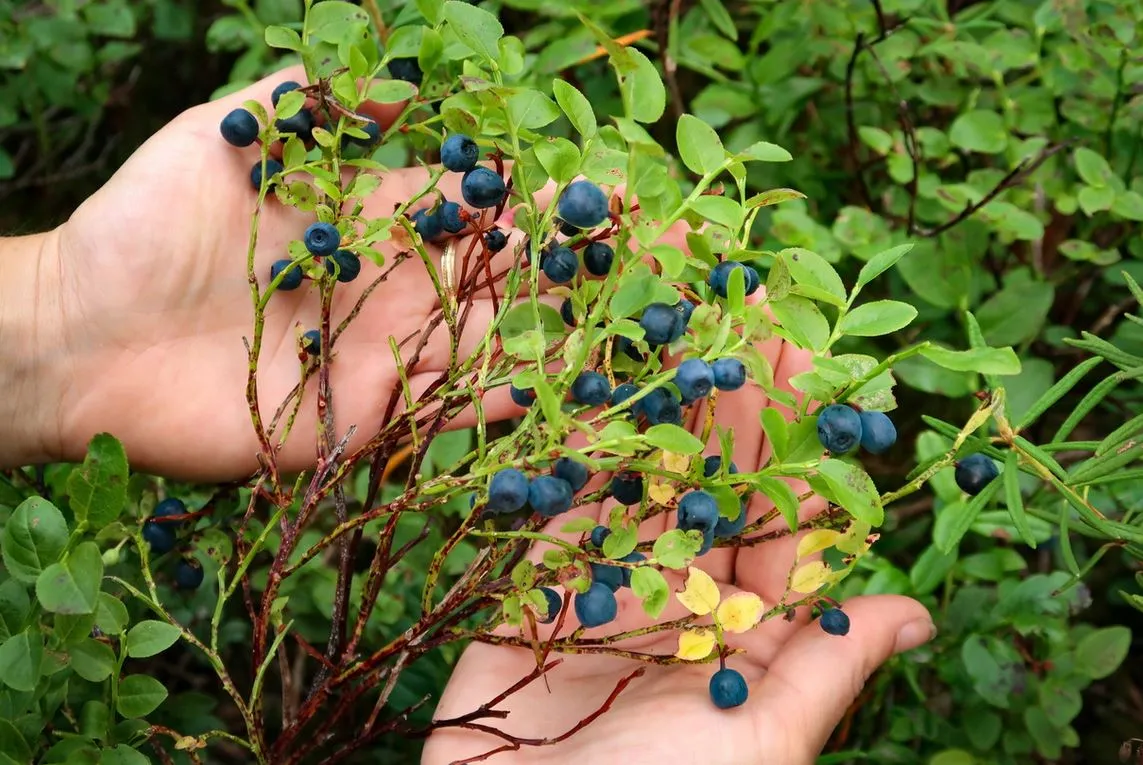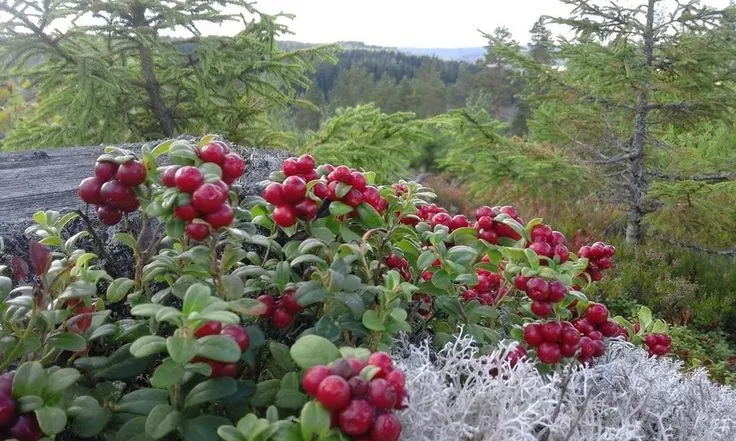
Vegan Mustikkapiirakka
Ingredients
For the crust:
1/4 cup (100g) vegan butter
1/3 cup (120g) sugar
1/3 cup (85g) applesauce
1.5 cups (185g) flour
1 tsp baking powder
1.5 tsp cardamom
For the filling
1.25 cups (250g) blueberries
3/4 cup (175g) vegan creme fraiche
1/3 cup (85g) applesauce
1 tsp cardamom
3 tbsp sugar
Instructions
- Preheat the oven to 375F/190C.
- Begin by making the crust. Combine butter and sugar in a mixing bowl and whip until creamy and combined.\
- Add the applesauce and mix until combined.
- Add the flour, baking powder, and cardamom, and mix to create a dough. The dough should be somewhat, but not too, sticky.
- Spread the dough evenly in a pie crust, then place in the oven to bake for 10 minutes.
- While the crust is baking, create the filling. Add the cream, applesauce, cardamom, and sugar to a bowl and mix until smooth.
- Once the crust is ready, remove it from the oven. Pour the blueberries into the crust, then top with the sauce. Use a spoon to smooth the sauce over the pie, then return it to the oven.
- Bake for 30 minutes.
- After 30 minutes, remove the pie from the oven, and let cool for at least 30 minutes at room temperature.
A longer and more detailed description
It’s blueberry season! My local market has been filled with various berries and delicious fruits, and y’know, I think that’s my cue to just delight in them. I could have made another stew or soup like I usually do, but no. Today, we’re making a blueberry pie. And it’s going to be amazing.
Start by making a crust. Combine your sugar and butter in a bowl, and give it all a thorough mixy mix until it’s creamed or until - like me - you get tired of stirring and decide what you have is probably good enough. Add your applesauce and mix again, knowing that now, it’s definitely creamy, and then add your flour and baking powder. Mix to get a dough, then slap that dough into whatever you’re using as a pie pan (in my case, a casserole dish). Bake it for ten minutes in the oven you definitely preheated, and work on your filling.
The filling is deeply complicated, but you and I, we’re old hats at this, and we’ll be just fine. Add all your liquids into a bowl and mix them. Add the sugar and cardamom and mix that too. It’s tough, but I believe in you.
Once the pie crust is done, pull it out of the oven (using an oven mitt or, in my case, a towel). Dump in the blueberries and try to make a smooth layer, but they’ll all be mushing together anyway, so it’s not that important. Pour the sauce over them and try to smooth that out as well. The smoother, the better, though again, it’s all going into your stomach anyway. Pop the whole affair back into the oven for another half an hour.
Once half an hour has passed, retrieve your pie from the oven, but don’t eat it yet! Instead, leave it sitting on the counter, preferably next to a window so it can be stolen by some passing fae. Leave it out for the fae for at least half an hour and then, if it hasn’t been stolen, slice off a piece and hyvää ruokahalua!
Substitutions and suggestions
For the crust: My partner thinks handmade crusts are always better than storebought. While I don’t disagree with him in principle, I will argue that my crusts tend to be thick and lumpy. I make a good pie, but not a pretty pie. To that end, if you want an easier and less lumpy crust, you could just buy a graham cracker crust and make this a bit closer to a cheesecake than a traditional pie.
For the flour: Traditionally, this crust would be made with rye flour. If you want a more authentic pie, I recommend using that. I am, however, lazy, and didn’t want yet another flour in my pantry, so I used regular flour.
For the applesauce in the crust: Applesauce is substituting in for egg in both cases here. I like to use applesauce as an egg substitute in baking because I like the extra bit of sweetness it adds, but you’re welcome to use an egg substitute of your choice. Baking soda and vinegar will make your crust fluffier, and egg substitute will make it more…crusty?
For the applesauce in the filling: I highly recommend not using baking soda and vinegar or egg substitute here. The egg in the filling is meant to hold the pie together a bit more, but I had zero issues with it with applesauce. That said, if you are concerned about the firmness of the filling, you could try adding in blended tofu or yoghurt. However, applesauce has a better flavour and texture, and really does work for holding the pie together.
For the creme fraiche: I’m aware not everyone has locally available vegan creme fraiche (you barbarians), but never fear! Vegan sour cream works just as well. If you use sour cream, add a bit more sugar in your filling.
For the blueberries: This pie would ordinarily be made with bilberries, a northern European fruit that look like and are related to blueberries, but which are not blueberries. I could not find bilberries because I’m a terrible forager, so I used blueberries. If you have bilberries, use those! Alternatively, I suspect this pie would work well with a variety of tart berries, but I like blueberries, so I used blueberries.
What I changed to make it vegan
As this is a pie with a custard-y filling, there’s a lot that needed changing. All eggs were substituted out for applesauce, and all dairy for a non-dairy equivalent. In the substitutions section, I talked a bit about why I use applesauce, but again, how you substitute out the eggs is entirely up to you.
What to listen to while you make this
Okay, so I know it seems suspiciously like Eurovision is a major source of music for me, but really, I swear, KAJ is just too excellent to not include here. Their music is all about having fun with the little things, and making a tasty pie is exactly that.
bara bada bastu bara bada bastu bara bara bara bara bara bada bastu
A brief context for this dish

In our Danish dish, I talked a bit about how winter informs what people eat and what becomes a national cuisine, and nowhere is that more true than in Finland. With winter reigning for over half the year in the northern parts of Finland, and winter temperatures frequently dropping below -20C (-very cold in Fahrenheit), having food available that will survive the winter is critical.
As such, traditional Finnish cuisine is defined by rye breads, tubers, and dried meat, fish, and berries. While it isn’t a heavily spiced cuisine, the addition of wild herbs such as dill and the tartness of the berries gives it a distinctive flavour and character that, even with the addition of new ingredients and cooking techniques, remains a symbol of Finnish identity.
That is especially true of the berries. Berry picking and the act of going hiking with a bucket is part of the Finnish summer experience, and there are so very many berries to find.
 Wild bilberries in Finland (Source: Finlandnaturally.com)
Wild bilberries in Finland (Source: Finlandnaturally.com)
Berries have been a fundamental part of the Finnish forest for millennia. Berries play a vital role in the ecosystem, providing food for critters and protection and nutrients for the trees surrounding them. Well into the 18th century, casual berry picking was a way of life for Finns, taking what they needed to make it through the winter and delight in the summer, but not over-harvesting.
Beginning in 1749, however, the Swedish Empire began a process of land reform throughout Finland. Known as the Great Partition, this land reform shifted land ownership from the more communal model that had been present previously towards a system of private land ownership more recognisable to modern audiences. Rather than land being evenly divided between villagers, land was instead allocated to farmers for their exclusive use, creating an unequal system of access to resources. This system - intentionally or otherwise - created a difference in access to the wild berries that had previously been a staple of Finnish life.
 Wild cloudberries (Source: Finlandnaturally.com)
Wild cloudberries (Source: Finlandnaturally.com)
There is a weird amount of 19th century Finnish case law surrounding berry picking and who has the right to pick berries where. Landowners increasingly barred nearby villagers from using their land for any reason, be it sheep grazing, finding wood, or berry picking, but with villagers insistently foraging anyway. A supreme court case from 1920, for example, not only had to establish whether there was a legal right to pick berries, but includes the delightful line “As picking berries from another person’s land is not a punishable act and August and Esko Lempiäinen thus did not have a legal right to seize the mentioned berries from Ilma Lindgren’s property, the Supreme Court considers it appropriate to convict August and Esko Lempiäinen to pay a fine and jointly obligate them to compensate Ilma Lindgren for the value of the lingonberries.” The idea that berries were a publicly available resource to be shared communally doesn’t reappear in Finnish jurisprudence until the 1930s.
 RETURN THE LINGONBERRIES (Source: Pinterest)
RETURN THE LINGONBERRIES (Source: Pinterest)
While berry picking is once again legally protected under Finnish law, and berry picking remains a national pasttime, it is also under increased threat, both from climate change, and from the forces of commercialisation. Finnish berries have a (well-deserved) reputation as a superfood, and are just delicious. As such, there is an increasing number of commercial berry picking ventures, using immigrant labour, to trawl the Finnish forests in search of berries. These commercial ventures often come into conflict with casual Finnish berry pickers, once again raising the question of who owns the berries, or if they can be owned at all.
One difference, however, is the influence of modern technologies on berry picking. Finland aims to be a carbon sink by 2035, and the preservation of its forests is a key part of that. Technologies such as drones using AI berry finders are increasingly part of how the traditions of berry picking, the commercialisation of berry picking, and ecological preservation are meeting. There is an increased interest in the forest, both for better and for worse, and the berries lie at the very heart of it all.
 Okay, but "AI berry finder" really seems like peak monkey brain to me. (Source: National Land Survey of Finland)
Okay, but "AI berry finder" really seems like peak monkey brain to me. (Source: National Land Survey of Finland)
What the future of Finnish berries is is hard to say. What is true, though, is that they remain a fundamental part of Finnish culture and cuisine, and occupy a place in the hearts of Finns. Berries are an important part of summer, and continue to be a delight, especially fresh from the dense forest.